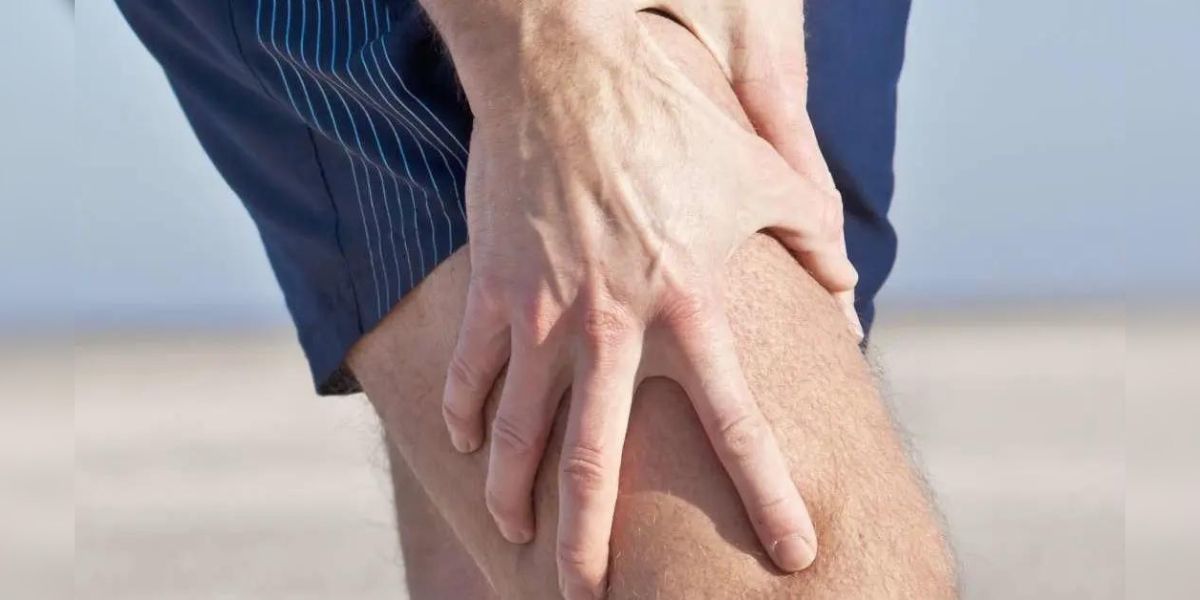South First spoke to experts to understand some of the reasons for these muscle cramps and how to manage them.

(Representational image/Creative Commons)
Have you ever been stopped in your tracks by a sudden, sharp pain seizing your muscles, especially during the sweltering heat of summer?
Whether you’re in the midst of an intense workout, enjoying a leisurely walk, or simply resting, muscle cramps can strike unexpectedly, leaving you gasping for relief.
With rising temperatures, the number of times one goes through these muscle cramps also increases.
South First spoke to experts to understand some of the reasons for these muscle cramps and how to manage them.
Dr Yogeesh Kamat, a consultant knee-and-hip specialist orthopaedic surgeon at KMC Hospital in Mangaluru, explained to South First:
“Muscle cramps are a universal occurrence, characterised by sudden, involuntary contractions that result in severe pain and immobility. While the leg muscles–such as the calves, feet and thighs–are the most commonly affected sites, other areas, including the abdomen, may also experience cramping either individually, or as a group of muscles.”
Kamat explained that these cramps typically occur due to over-excitation of muscles, leading to prolonged contractions without adequate rest.
They can occur during strenuous physical activity or even at rest, he added.
Several factors contribute to the aggravation of muscle cramps, including dehydration, electrolyte depletion, reduced blood supply to muscles, altered hormonal levels, and neurological abnormalities, said Kamat.
Women are particularly prone to these conditions, especially when engaging in activities requiring high muscle activity, such as endurance running.
Doctors explained that muscle cramps are particularly prevalent in summer due to increased sweating, which leads to rapid loss of fluids and electrolytes, which are essential for muscle function.
Explaining in detail, Kochi-based gastroenterologist Dr Rajeev Jayadevan said muscles require specific elements to function optimally.
Muscles rely on potassium, sodium, calcium, magnesium, and adequate hydration for effective operation. This is alongside adenosine triphosphate (ATP), which is the body’s energy currency.
“Imbalance or deficiencies in electrolytes can arise during dehydration, such as on hot, humid days when these essential salts are lost through sweat, which is the body’s natural cooling mechanism,” said Jayadevan.
Dehydration hence becomes one of the common causes of muscle cramps, explained Dr Sudhir Kumar, a noted neurologist from Apollo Hospitals in Hyderabad, who is also a running enthusiast.
He says, “In dehydration, there is loss of water as well as electrolytes. It is important to note that cramps are caused due to the loss of electrolytes such as sodium, calcium, potassium, and magnesium.”
Sudhir said a few common reasons for dehydration include intense exercise like running, playing a sport, or cycling, especially in hot weather; sweating on exposure to hot weather; diarrhoea; and certain medications such as diuretics used for treating hypertension.
With summer vacations about to begin, a rise in health awareness, vacations, marathons, morning and evening walks, and physical activities are expected to increase, explained sports rehabilitation specialist Dr Bishwaranjan Das.
This increase would be seen particularly among younger and middle-aged adults, including those who work from home, said Das, who is also an extended-scope practitioner at the Centre for Knee and Hip Care at KMC Hospital.
He said, “Despite knowing the importance of exercise, professionals in desk jobs often struggle with its execution. Poor sitting habits and inadequate work ergonomics persist. Working women face the additional challenge of balancing household responsibilities and work-related targets with exercise activities.”
He added that when engaging in sports, especially irregular weekend activities or non-professional endurance activities, it is essential to adhere to the following measures vigilantly:
Sudhir said the first step was to avoid dehydration by focusing on replenishing electrolytes along with water.
“If only water is given without electrolytes, then muscle cramps can get worse,” he explained.
Meanwhile, Jayadevan suggested natural sources of potassium, like orange juice, coconut water, and bananas. Potassium loss can be compensated by consuming these, he said.
“Lightly salted lime juice and buttermilk also provide essential electrolytes,” added Jayadevan.
He highlighted that it was important to differentiate specialised electrolyte drinks that athletes use from energy drinks that may contain unnecessary ingredients and also extra calories.
“Some energy drinks contain high levels of caffeine, which can lead to rapid heart rate, tremors, and anxiety,” noted the gastroenterologist.
The doctors insisted that repeated cramps, particularly if they occur in the same area, need a thorough assessment by a specialist.
“Such recurrence may signal an underlying occult injury that warrants proper treatment. It’s crucial not to dismiss persistent cramping as merely a temporary discomfort, as it could signify a more serious underlying issue,” said Das.
“Seeking medical attention and evaluation ensures that any potential injuries are identified and addressed promptly, preventing further complications and promoting optimal recovery,” he explained.
For those experiencing a muscle cramp, immediate remedies can offer relief. “Gently stretching the affected muscle and massaging the area can alleviate the cramp,” advised Das.
“Applying a warm compress or taking a warm bath can also help relax muscles,” he added.
(Edited by Arkadev Ghoshal)

May 03, 2024

May 03, 2024

May 01, 2024

May 01, 2024

Apr 30, 2024

Apr 30, 2024